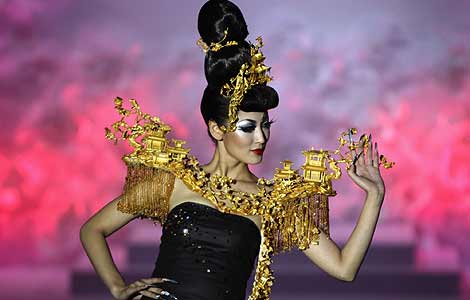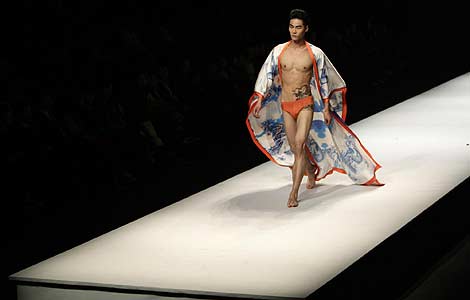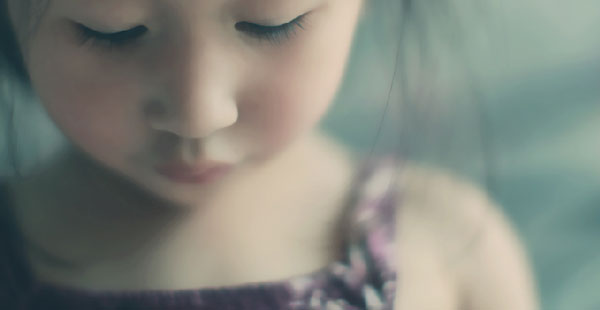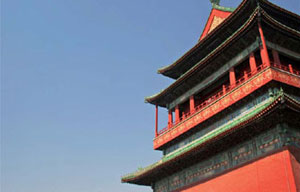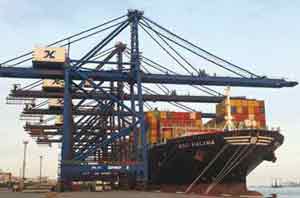Art market shows its eastern colors
Updated: 2011-11-04 10:30
By Clare McAndrew (China Daily European Weekly)
|
|||||||||
China has emerged as a heavyweight, and it is helping to protect the market from downside risks
|
 |
The first decade of the 21st century will stand out as a period of great change in the global art market. The geographical landscape and balance of market power has changed more in the space of these few years than in the previous 50.
London and New York have dominated the market since the 1960s. Now China has emerged as the new force, driven by strong local and increasingly international purchasing power.
The global art trade has seen astonishing growth in the past 10 years, with the market doubling in size to a peak of 48 billion euros in 2007 -its highest ever-recorded total. However, things began to turn in 2008 and 2009.
The economic downturn strongly affected income and wealth, and spending in most markets contracted, especially in the United States and Europe. Art fared relatively well during the downturn compared to other luxury goods because of its long-term, tangible value.
Nonetheless, few sectors of the art market were spared contractions. After a marked contraction in both supply and demand over 2009, the global art and antiques market fell by 33 percent from 2008 values to a total of 28.3 billion euros.
This represented a contraction of 41 percent from the peak in 2007 and one of the biggest declines in the art market since its previous recession in the early 1990s.
In the late 1980s, strong Japanese buying, mainly in the Impressionist and Post-Impressionist sectors, exacerbated an over-heating market, creating a demand-induced bubble, largely fueled by tax considerations and inflation-induced build-up of wealth in property.
The yen had also appreciated significantly against the dollar, leaving the Japanese awash with money. Surplus cash combined with insufficient knowledge on the part of new purchasers. As a result, prices rose sharply, with often-huge sums paid for mediocre works.
That art boom ended abruptly in 1989, with a sharp rise in interest rates by the Bank of Japan causing many speculative collectors to go under, often because of a collapse of liquidity from unrelated investments.
Japanese buyers disappeared in a matter of weeks and the market hit an international low in 1990 and 1991, with significant buying only starting to return years later. In the most recent contraction in 2009 however, the dynamics have been different: the market showed resilience in 2010, with global sales on aggregate increasing by 51 percent to 43 billion euros.
This quick recovery coincided with a more general rebound in consumer confidence, and recovery in the luxury goods market with Chinese consumers driving growth as the geographical distribution of wealth continues to shift east.
While markets such as the US and Britain are yet to recover, the Chinese art market maintained its boom throughout 2010 and 2011. The size of the Chinese art and antiques market more than doubled in value from 2009 to 2010. Several sectors of the market experienced record auction prices, with traditional sectors, such as porcelain, ceramics and Chinese painting and calligraphy showing growth of over 160 percent year-on-year.
China's modern and contemporary art markets rebounded strongly in the second half of the year in Hong Kong and on the Chinese mainland, with aggregate values more than doubling those of 2009.
Sales growth in China, in both Hong Kong and in mainland art centers, has resulted in the most interesting transformations in the market's recent history. The global hierarchy for many years had been dominated by Western markets, with the top positions rarely fluctuating from the US, Britain, France, Germany and Switzerland.
For the first time in 2006, China challenged the status quo, pushing Germany off fourth position with a share of 5 percent of sales. China moved into third position ahead of France in 2007 with an 8 percent share and remained there for the next two years, growing almost exponentially year-on-year.
In 2010, China had its strongest year yet, emerging as the second largest market worldwide, overtaking Britain for the first time. The size of the Chinese art and antiques market (including auction and dealer sales), more than doubled in value from 2009 to 2010, reaching 9.8 billion euros, which gave it 23 percent share of the market.
The US still dominated with 34 percent, but its margin has narrowed in recent years, falling over 12 percentage points from a high of 46 percent in 2006. Britain's share in 2010 was 22 percent, a fall of 5 percentage points from 2006, largely due to the advance of the Chinese art market.
Although the market for Chinese art was historically focused on decorative arts, it was mainly the contemporary Chinese market that showed the most rapid growth initially, although now older sectors are also catching up.
Figure 1 shows the value of auction sales, which rose nearly nine times in the six-year period, with 2010 representing by far the largest rise in all sectors of the market. Large auction houses such as Poly International and China Guardian reached close to 1 billion euros each in sales, far surpassing some of their regional Western counterparts.
Sales at Sotheby's and Christie's in Hong Kong were also their best, doubling 2009 values in some sectors. In the premier tier houses, Chinese buyers now make up between 15 percent and 25 percent of buyers worldwide, up from 8 percent in 2009 but virtually non-existent in the early years of the decade.
The boom of auction sales has been driven by strong market supply: the volume of auction sales in China increased 120 percent from 2002 to 2010. Figure 2 shows the ratio of lots offered versus lots sold (or the rate of buy-ins) over the period. Buy-in rates in the market have been above 40 percent in all years since 2005 and were 47 percent in 2010.
This is much higher than average rates in Western markets, and could be the result of many factors including variable quality and the persistent problem of fakes and forgeries, or simply not yet enough buyers.
New Chinese buyers have been critical in supporting the recovery of the global market in 2010 and 2011. Art is a luxury, so has been subject to a negative "income effect" from the global recession. The 2008-2010 period was quite volatile in the luxury goods market. In 2009, spending was down 16 percent in the US and 8 percent in Europe. But the 10 percent growth in Asia helped dull the effects of the recession, leading to an overall global drop of only 8 percent.
The first real signs of recovery for luxury goods came in 2010, driven again by Chinese shoppers. Luxury sales on aggregate were up 10 percent and there was 22 percent growth in Asia Pacific spending.
According to Bain and Company, China will be the third largest luxury market worldwide by the middle of the next decade. The new luxury shopper will be "young, male and Chinese". Recent reports from PricewaterhouseCoopers are even more bullish, saying China will be the biggest purchaser of luxury goods by 2015.
The main consumers in the art market are the stereotypical high net worth individuals (HNWIs) active in organized financial markets. In 2011, the size of the HNWI population in the Asia-Pacific is greater than that of Europe at 3.3 million, and rapidly approaching that of North America (with 3.4 million). Wealth in the region has far surpassed Europe (at $10.8 trillion versus $10.2 trillion).
The population of HNWIs in Hong Kong doubled over 2009 as the stock market recovered and 31 percent on the Chinese mainland. China is now the fourth largest base for HNWIs worldwide. However the US is still home to the largest number of millionaires with 28 percent share of their population (3.1 million).
Japan and Germany are next in line with a population of 1.7 million and 924,000 respectively. With a population of HNWIs of around 535,000, there is therefore still nearly double the number of millionaires in Germany than China.
A positive factor for the art market is the fact that much of the increased price for art in China is being driven by demand from a tiny proportion of the population. Average incomes in China remain relatively low, with much more concentrated wealth compared to some of the older art markets.
Average incomes have risen from around $950 in 2000 to just over $4,000 in 2010, an increase of over 350 percent but still below other mature markets such as the US and Europe where average incomes are close to $40,000 or more.
This signals the possibility of a favorable outlook for future growth in these art markets, as the "middle classes" are not yet buying art to any large extent. GDP per capita is expected to rise to $10,000 in the next 10 years and a significant middle class will be formed by 2020, all of which is expected to further buoy the art market.
What is critically important about China and this market transformation, is that as a new and major player, it has helped protect the market from some of the downside risk it would have been subject to over the last year or so had it still relied solely on Britain, US and a couple of European markets.
The global art market has experienced a rapid cycle of boom, bust and recovery, and is now emerging as a different trading ground, with new markets leading and others lagging behind. The continued globalization of the art market has helped lead it to a stronger and faster recovery than would otherwise be the case, but has made it internally more competitive. The old London-New York duopoly is over. A new landscape has distinctly and permanently emerged.
The author is CEO of Arts Economics, a research and consulting firm focused exclusively on the art economy. The opinions expressed in the article do not necessarily reflect those of China Daily.


